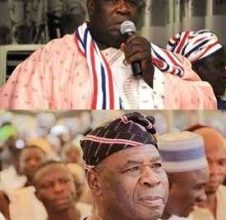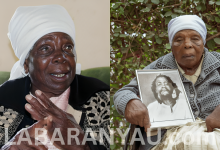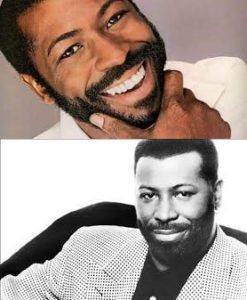
Teddy Pendergrass Biography
American soul and R&B singer-songwriter Theodore DeReese Pendergrass passed away on January 13, 2010. He was born on March 26, 1950. In South Carolina’s Kingstree, he was born. Pendergrass, who spent the majority of his life in the Philadelphia region, first achieved musical success as Harold Melvin & the Blue Notes’ lead singer. Pendergrass left the group in 1976 and went on to have a successful solo career with the Philadelphia International label.
He released five straight platinum records, which was unprecedented for an African-American R&B performer at the time. Following an automobile accident in March 1982 that left Pendergrass paraplegic from the waist down, his career was put on hold. Up until the time he announced his retirement in 2007, Pendergrass had a lucrative solo career. In January 2010, he passed away from respiratory failure.
Teddy Pendergrass Early life
Theodore DeReese Pendergrass, better known as Teddy Pendergrass, was born on March 26, 1950, in Kingstree, South Carolina. Jesse and Ida Geraldine (née Epps) Pendergrass had only him as a child. Six miscarriages were experienced by Ida before Teddy was born. Pendergrass’s father abandoned the family when he was still quite young. His mother told him as he grew up that she would track down his father so the two of them could meet. Teddy met his father when he was 11 years old because she kept her word. Soon after, on June 13, 1962, Jesse was fatally stabbed while fighting with another man.
Age-wise, he was 47. Pendergrass frequently sung at church and was raised in a depressed neighborhood of North Philadelphia. According to author Robert Ewell Greene, he always wanted to be a pastor and realized his dream when he was ordained as a minister at the age of 10. At this time, Pendergrass began playing the drums and was a junior deacon in his church.
He attended North Philadelphia’s Thomas Edison High School for Boys. With the Edison Mastersingers, he performed. He dropped out of school in the eleventh grade to pursue a career in music, releasing his debut single, “Angel with Muddy Feet.” But the recording didn’t do well in the marketplace. Pendergrass played drums for a number of Philadelphia-based bands before joining The Cadillacs (not the renowned Harlem-based group of the same name) as their drummer. Founder of the Blue Notes Harold Melvin (1939-1997) noticed him in 1970 and persuaded Pendergrass to join the band on drums.
Pendergrass started singing along during a concert, though, and Melvin was so moved by his voice that he appointed him the main singer. The Blue Notes had failed to find popularity before Pendergrass joined them. All of this changed in 1971 when they signed a recording contract with Philadelphia International Records, starting Pendergrass’s fruitful partnership with the label’s founders, Kenny Gamble and Leon Huff.

Teddy Pendergrass Early career
The slow, somber song “I Miss You” by Harold Melvin and the Blue Notes was published as their first single in 1972. The Dells were the intended audience for the song, but the band rejected it. Kenny Gamble chose to work with Pendergrass, who was only 21 at the time of the recording, to create the song after noticing how much the main vocalist of the Dells, Marvin Junior, sounded like Pendergrass. Much of the song is sung by Pendergrass in a gruff baritone voice[5] that would later become his signature. Along with Lloyd Parks’ background falsetto singing, the song also highlighted Harold Melvin’s addition of a rap at the song’s conclusion as Pendergrass continued to sing while acting as though she was crying.
The song, one of Gamble and Huff’s most inventive compositions, was a huge rhythm and blues smash that established the Blue Notes as a prominent force in the genre. “If You Don’t Know Me by Now,” the group’s follow-up single, helped the group break into the mainstream as it peaked at number one on the soul no. 1 singles list and the top 10 on the Billboard Hot 100. The song, like the song “I Miss You” before it, was originally written for a different performer, fellow Philadelphian Patti LaBelle and her group Labelle. However, owing to scheduling issues, the group was unable to record it. Pendergrass and LaBelle were good friends, and they remained such until Pendergrass passed away.
The trio continued to release music over the years, including the ballad “Hope That We Can Be Together Soon,” the socially concerned singles “Wake Up Everybody” and “Bad Luck,” and “The Love I Lost,” a tune that predated the emerging disco music trend. Don’t Leave Me This Way, a Philly soul classic that became a disco hit when Motown diva Thelma Houston recorded her version in 1976, was one of the group’s significant hits. Harold Melvin and Pendergrass were at odds by 1975, primarily because of monetary concerns and personality differences.
Melvin was in charge of the group’s finances even though Pendergrass sang the majority of the tunes. Teddy Pendergrass had requested that the band be renamed “Teddy Pendergrass and the Blue Notes” since people kept mistakenly thinking he was Melvin.[Reference needed] After Pendergrass quit the band in 1975, the Blue Notes had trouble finding suitable replacements. They finally quit working at Philadelphia International and toiled until Melvin’s passing in 1997, toiling in comparatively obscurity. In 2014, the ensemble was still performing as Harold Melvin’s Blue Notes on the old-school circuit.
Solo career
Early solo success
Pendergrass released an album with the same name in 1977, and the disco hit “I Don’t Love You Anymore” helped the record reach platinum sales. “The Whole Town’s Laughing at Me,” the follow-up single, peaked in the top 20 of the R&B charts. The upbeat album tracks “You Can’t Hide from Yourself” and “The More I Get, The More I Want” as well as the ballad “And If I Had” were all hits despite not being made available as singles. The second album, 1978’s Life Is a Song Worth Singing, came out right after the first. The singles “Only You” and the legendary million-selling number-one R&B hit “Close the Door” from that album helped make it even more popular.
The later song cemented Pendergrass’ status as the genre’s leading male sex icon. The disco hit “Get Up, Get Down, Get Funky, Get Loose,” the ballad “It Don’t Hurt Now,” and the upbeat classic “When Somebody Loves You Back” all contributed to the album’s fame. The albums Teddy, which spent eight weeks at the top of the Billboard R&B chart and was awarded the second-biggest R&B album of the year, and the live release Live Coast to Coast followed that double platinum number-one R&B victory in 1979.
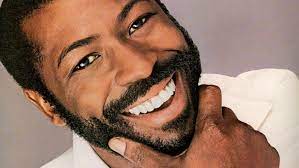
Teddy’s greatest hits included “Come Go with Me,” “Turn Off the Lights,” and the upbeat album track “Do Me.” After his 1979 tour, Pendergrass’ s sex appeal was at an all-time high, so with his 1980 album TP, he adopted a more laid-back style. It featured the enduring number two R&B smash “Love TKO,” the duet of “Feel the Fire” with Stephanie Mills, and the Ashford & Simpson song “Is It Still Good to You.” Pendergrass achieved five consecutive platinum albums between 1977 and 1981, which at the time set a record for a rhythm and blues musician.
The popularity of Pendergrass skyrocketed at the conclusion of 1978. His manager, the well-known Shep Gordon, who was famed for his creative methods of promoting his acts, immediately observed that a sizable portion of his following was made up of women of all races. His gigs were packed with sold-out crowds. Gordon came up with a strategy for Pendergrass’ upcoming tour that would limit the audience to females, beginning a practice known as “women-only concerts” that is still practiced today.
Pendergrass, who has four platinum albums and two gold ones, was on his way to becoming what the media dubbed “the black Elvis” due to his crossover success as well as the fact that he had purchased a residence near Philadelphia that was eerily similar to Graceland. Early in 1982, Pendergrass had perhaps surpassed Barry White and all other R&B artists to become the most well-known male R&B performer of the time, exceeding Marvin Gaye in popularity. The Isley Brothers’ “Don’t Say Goodnight (It’s Time for Love)” competed with Pendergrass’ “Turn Off the Lights” in 1980 and felt Pendergrass’ effect on the calm storm format of black music.
Teddy Pendergrass Car crash
Pendergrass was engaged in a car accident on March 18, 1982, in the East Falls neighborhood of Philadelphia on Lincoln Drive close to Rittenhouse Street while operating his brand-new Rolls-Royce Silver Spirit. The singer’s license was suspended at the time of the collision due to unpaid parking fines (he had previously crashed a Maserati the week before). The police then refuted rumors that drinking played a role. Tenika Watson, a transsexual nightclub performer whom Pendergrass supposedly knew from the 1970s, was reportedly being driven to her home by Pendergrass.
Pendergrass would only admit that he knew Watson on a passing basis. Watson thought that the car’s technical problem and perhaps some brake tampering were to blame for the collision. The vehicle slammed through two trees, a guard post, and the oncoming lane. No additional vehicles were present. They were trapped for over an hour until both were released after the crash blocked the doors. Watson survived the incident with very minor injuries, but Pendergrass sustained a spinal cord damage that rendered him a tetraplegic who was paralyzed from the chest down; he was never able to walk again.
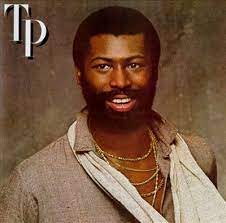
Later solo career
Throughout his rehabilitation, Pendergrass received good wishes from tens of thousands of his admirers. Both 1983’s Heaven Only Knows and Philadelphia International’s August 1982 single This One’s for You failed to find success on the charts. Pendergrass recorded music for both albums prior to the crash. His agreement with Philadelphia International was fulfilled by the albums. When Pendergrass made the decision to go back into the recording studio to create new music, he had a difficult time landing a record deal. He eventually completed physical therapy, signed a deal with Asylum Records, and in 1984 he published Love Language. The pop ballad “Hold Me” from the album featured a young Whitney Houston at the time. It received a Gold certification from the RIAA and peaked at No. 38 on the Billboard album chart.
In front of a live crowd of more than 100,000 people at the legendary Live Aid event in Philadelphia on July 13, 1985, Pendergrass made an emotional comeback to the stage in front of an estimated 1.5 billion television viewers.[12] After the accident, it was the 35-year-old’s first live performance. Pendergrass sang the Diana Ross song “Reach Out and Touch (Somebody’s Hand)” after sincerely thanking the crowd for their well wishes. When the song “Joy” from his album of the same name was released in 1988, Pendergrass achieved his first R&B number-one hit in nearly ten years.
The song’s music video had frequent airplay on BET. With a peak position of 77, it was also his penultimate Hot 100 listed single. The RIAA awarded the album a Gold certification the same year. Additionally, Pendergrass’s voice could be heard on the jingles of the WSNI-FM radio station in Philadelphia during the time. Pendergrass continued to record throughout the 1990s. The 1994 release of the new jack swing song “Believe in Love” was one of the singer’s final hits. He co-starred with Stephanie Mills in the Christian musical Your Arms Too Short to Box with God in its 1996 touring production. Pendergrass published his autobiography, Truly Blessed, in 1998.
“The Power of Love” was the theme of Pendergrass’ performance at the Wiltern Theater in Los Angeles on February 14, 2002. Later that year, the Razor & Tie record label published the concert’s soundtrack, From Teddy, With Love. It was his second and last live CD (the first being Live! Coast to Coast). You may still see videos of the concert on YouTube, where he sang his comeback song, “Joy.”
Kenneth “Babyface” Edmonds used Pendergrass’s “Wake Up Everybody” as a rallying cry during the 2004 Presidential campaign. The song has been performed by a wide spectrum of artists, including Simply Red and Patti LaBelle. His works have also been used by Little Brother, Kanye West, Cam’ron, Twista, Ghostface, Tyrese Gibson, 9th Wonder, DMX, and DJ Green Lantern.
Pendergrass made his exit from the music industry official in 2006. Teddy 25: A Celebration of Life, Hope & Possibilities, a 25th anniversary awards ceremony commemorating Pendergrass’s crash, raised money for his charity, The Teddy Pendergrass Alliance, and recognized those who had assisted Pendergrass since the accident, required him to make a brief comeback to performing.
Teddy Pendergrass Personal life and death
Tisha, LaDonna, and Theodore Jr. are the three children that Pendergrass had.
Taazmayia “Taaz” Lang, the manager of Pendergrass, was shot and killed in April 1977 outside her house. Although Philadelphia’s Black Mafia has been suggested as a suspect in the murder because they are said to have disliked Lang’s influence over Pendergrass’s lucrative profession, the crime is still unsolved.
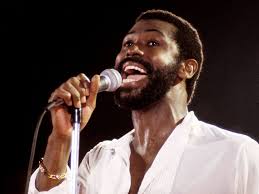
Pendergrass wed Karen Still, a former Philadanco dancer who had also performed in his shows, in June 1987. In 2002, they got divorced. Pendergrass and Patricia Romanowski released his book, Truly Blessed, in 1998.
Joan Williams and Pendergrass first spoke in the spring of 2006. After four months, he proposed to her, and on Easter Sunday, March 23, 2008, they were married in a secret ceremony supervised by his pastor, Alyn Waller of Enon Tabernacle Baptist Church. On September 6, 2008, a formal wedding was held at The Ocean Cliff Resort in Newport, Rhode Island. In order to help inner city youngsters in Philadelphia, Joan Pendergrass and other members of Enon Tabernacle Baptist Church established The Enon Tabernacle Baptist Church youngsters Fund in their honor.
Pendergrass successfully survived colon cancer surgery on June 5, 2009, after which she went home to recover. A few weeks later, he visited the hospital once more due to respiratory problems. At Bryn Mawr Hospital in Bryn Mawr, Pennsylvania, he succumbed to respiratory failure on January 13, 2010, seven months after being diagnosed. His wife Joan was by his side. He was 59. In Bala Cynwyd, Pennsylvania, in the West Laurel Hill Cemetery, his body was laid to rest.
As of 2015, a biopic of Pendergrass’s life was in the works, with Tyrese Gibson cast as the late singer. Gibson contacted Lee Daniels to produce the movie, according to an article in Essence Magazine from 2020.
If You Don’t Know Me, a BBC Film production, is a biography of Pendergrass that was released in 2019. It was broadcast on Showtime on February 8th.
Teddy Pendergrass Discography
- Teddy Pendergrass (1977)
- Life Is a Song Worth Singing (1978)
- Teddy (1979)
- TP (1980)
- It’s Time for Love (1981)
- This One’s for You (1982)
- Heaven Only Knows (1983)
- Love Language (1984)
- Workin’ It Back (1985)
- Joy (1988)
- Truly Blessed (1991)
- A Little More Magic (1993)
- You and I (1997)
- This Christmas (I’d Rather Have Love) (1998)
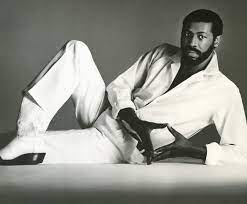
Teddy Pendergrass Awards and honors
Grammy Award nominations
Pendergrass received five Grammy Award nominations.
| Award | Year | Result | Category | Song |
|---|---|---|---|---|
| Grammy Award | 1979 | Nomination | Best Male R&B Vocal Performance | “Close the Door” |
| 1982 | Nomination | Best Male R&B Vocal Performance | “I Can’t Live Without Your Love” | |
| 1989 | Nomination | Best Male R&B Vocal Performance | Joy | |
| 1992 | Nomination | Best Male R&B Vocal Performance | “How Can You Mend a Broken Heart” | |
| 1994 | Nomination | Best Male R&B Vocal Performance | “Voodoo”
|
Other awards
Between 1979 and 1981, Pendergrass was nominated for several American Music Awards, including Favorite Soul/R&B Male Artist, Favorite Soul/R&B Album, and Favorite Disco Artist. In 1979, he and performer Lou Rawls shared the AMA award for Favorite Soul/R&B Male Artist. Pendergrass was posthumously admitted into the 2021 class of the National Rhythm & Blues Hall of Fame.
How long did Teddy Pendergrass live after his accident?
A few weeks later, he visited the hospital once more due to respiratory problems. At Bryn Mawr Hospital in Bryn Mawr, Pennsylvania, he succumbed to respiratory failure on January 13, 2010, seven months after being diagnosed. His wife Joan was by his side.
Who is Teddy Pendergrass net worth?
Teddy Pendergrass had a net worth of $12 million. Teddy Pendergrass was an American singer and composer who specialized in R&B and soul.
How many kids did Teddy Pendergrass have?
In the early 1970s, Pendergrass’ career was flourishing and his family was expanding. He never wed the woman who bore him his three children, Tisha, LaDonna, and Teddy II, all of whom were born in 1974.
What happened to Teddy Pendergrass when he died?
He was 59. His spokeswoman Lisa Barbaris, who indicated that Mr. Pendergrass had been receiving treatment for colon cancer at Bryn Mawr Hospital since August, confirmed his passing.

How did Teddy get paralyzed?
Pendergrass was paralyzed from the chest down and shattered his neck in a car accident on March 18, 1982, when the brakes on his Rolls Royce failed. Rumors circulated that he was intoxicated (he wasn’t) and with a transsexual woman (he was, but so what?)
Who got Teddy Pendergrass money when he died?
He was 59. A probate court ruled that Pendergrass’ will transferred his entire wealth to his wife Joan just after the singer passed away.
Discover more from Labaran Yau
Subscribe to get the latest posts sent to your email.

